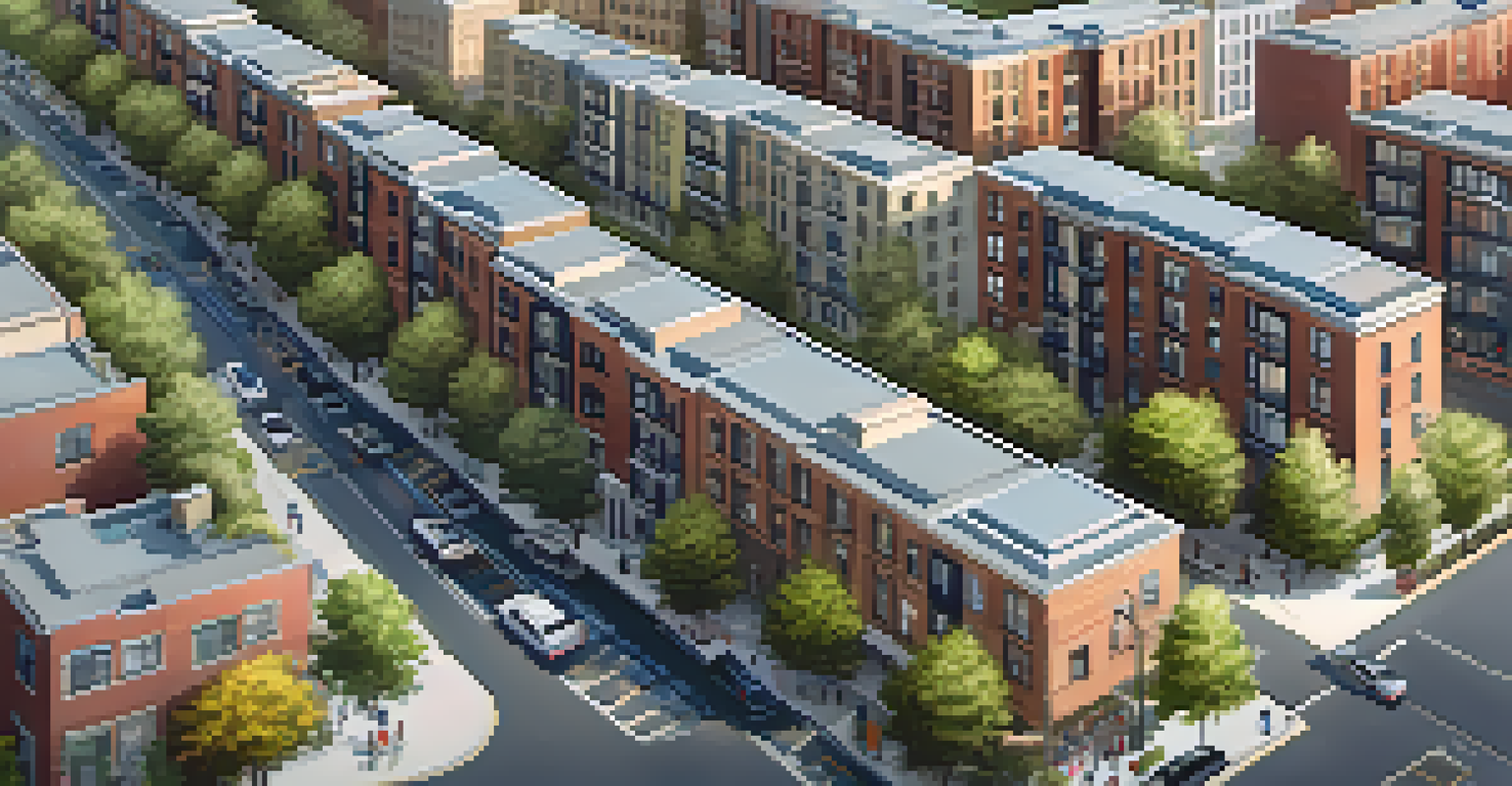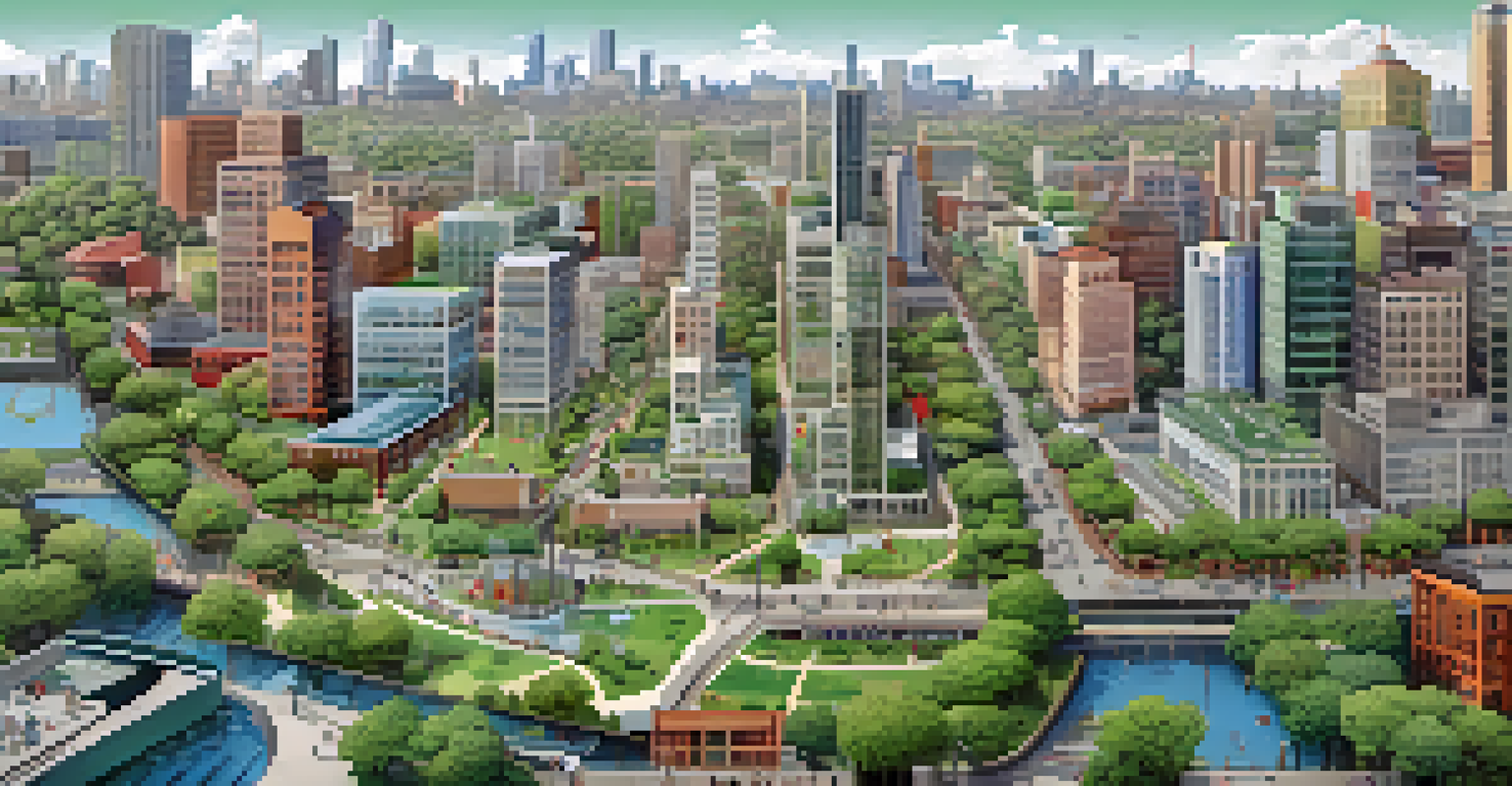Analyzing the Impact of Zoning Laws on Real Estate Markets

What Are Zoning Laws and Their Purpose?
Zoning laws are regulations that dictate how land in specific areas can be used. Think of them as a set of rules that determine whether a piece of land can be developed for residential, commercial, or industrial purposes. By establishing these guidelines, municipalities aim to ensure the orderly development of communities and manage the impact on local infrastructure and services.
Zoning laws can be a double-edged sword; they can protect our communities while simultaneously limiting housing options.
These laws help prevent conflicts between different land uses, such as keeping noisy factories away from quiet neighborhoods. They also play a crucial role in protecting the environment, controlling urban sprawl, and maintaining property values. For example, if a city decides to zone an area for parks, it can create green spaces that enhance the quality of life for residents.
However, zoning laws can also have unintended consequences, such as limiting housing supply or creating economic disparities. By restricting what can be built where, these laws can drive up property prices and make it harder for new developments to emerge. This is where the real estate market starts to feel the impact of these regulations.
How Zoning Affects Property Values
One of the most significant impacts of zoning laws is on property values. When an area is zoned for residential use, it typically attracts families and individuals looking for homes, which can drive up demand and, subsequently, prices. Conversely, if an area is zoned for industrial use, it might deter potential homeowners, keeping property values lower.

For instance, a neighborhood that transitions from residential to mixed-use zoning can see a surge in property values as new businesses move in. This can make the area more desirable and vibrant, but it can also lead to gentrification, where original residents are priced out. Thus, understanding zoning dynamics is crucial for investors and homebuyers alike.
Moreover, changes in zoning laws can lead to rapid fluctuations in the market. A city’s decision to rezone an area for higher density can create a rush of interest from developers, significantly increasing property values overnight. This unpredictability underscores the importance of keeping an eye on local zoning changes.
The Role of Zoning in Urban Development
Zoning laws play a critical role in shaping urban development and planning. By dictating land use, they help cities grow in a way that meets the needs of their residents. For example, a city might zone certain areas for high-density housing near public transit to encourage sustainable living and reduce traffic congestion.
Good zoning practices can foster healthy, sustainable communities, but poor zoning can lead to disconnection and inequality.
Moreover, zoning can influence the type of infrastructure that gets built. Areas zoned for commercial use may see more investments in roads, public transport, and utilities, which can benefit the local economy. This interconnectedness highlights how zoning not only affects land use but also the overall urban landscape.
However, the challenge lies in balancing development with community needs. If zoning laws are too restrictive, they can stifle growth and innovation. On the flip side, overly permissive zoning can lead to overcrowding and infrastructure strain. Striking this balance is essential for sustainable urban development.
Zoning Laws and Housing Affordability
One of the most pressing issues in real estate today is housing affordability, and zoning laws are often at the center of this debate. Restrictive zoning can limit the supply of affordable housing, making it difficult for lower-income families to find suitable living arrangements. For example, single-family zoning can prevent the development of multi-family units that could provide more affordable options.
Additionally, when zoning regulations require large lot sizes or impose strict building requirements, it can drive up the cost of new housing developments. This, in turn, affects the overall housing market, making it more challenging for first-time homebuyers and renters to enter. The ripple effect can be felt throughout the community, leading to increased homelessness and economic disparity.
On the other hand, some cities are recognizing the need for more inclusive zoning practices. By allowing for mixed-use developments and higher density housing, municipalities can create more affordable living options. This shift in perspective can help address the housing crisis while still respecting neighborhood character.
The Impact of Zoning on Commercial Real Estate
Zoning laws don't just affect residential properties; they also play a significant role in shaping commercial real estate markets. For businesses, the right zoning can mean the difference between thriving and just surviving. Areas zoned for commercial use attract businesses and customers, leading to increased foot traffic and higher sales.
Consider a bustling downtown area that's zoned for mixed-use development. This type of zoning encourages a blend of residential, retail, and office spaces, creating a vibrant community hub. In contrast, a zone strictly reserved for industrial use may limit opportunities for retail and service businesses, ultimately affecting the local economy.
However, the landscape of commercial real estate is continually evolving. With the rise of e-commerce and remote work, some areas previously zoned for traditional retail may need to adapt. This flexibility in zoning can foster innovation and help communities respond to changing market demands.
Zoning and Environmental Considerations
Zoning laws also intersect with environmental concerns, making them a vital tool for sustainable development. By designating specific areas for conservation, municipalities can protect natural resources and wildlife habitats from urban encroachment. For instance, zoning laws that restrict development near wetlands help preserve essential ecosystems.
Additionally, zoning can promote environmentally friendly practices by encouraging higher-density development and mixed-use zoning. This approach reduces sprawl and promotes the use of public transportation, ultimately lowering carbon footprints. By thoughtfully planning land use, cities can create healthier, more livable environments.
However, it's essential for policymakers to consider the long-term impact of zoning decisions on the environment. An area might be zoned for development today, but if it leads to increased pollution or habitat destruction, the consequences can be far-reaching. Striking a balance between development and environmental preservation is crucial for sustainable growth.
Future Trends in Zoning Laws
As cities evolve, zoning laws are also adapting to meet emerging challenges and opportunities. One trend gaining traction is the movement towards form-based zoning, which focuses more on the physical form and design of buildings rather than their specific uses. This flexible approach can lead to more aesthetically pleasing and functional urban spaces.
Another trend is the push for inclusionary zoning, which aims to create a more equitable housing market. By requiring developers to include affordable units in new projects, cities can help alleviate the housing crisis while promoting diversity. This can lead to more vibrant communities where people from various backgrounds live and work together.

Finally, advances in technology are influencing how zoning laws are developed and enforced. Online platforms and data analytics can provide insights into land use patterns and community needs, allowing for more informed decision-making. As we look to the future, these trends will continue to shape the real estate landscape, making it essential for stakeholders to stay informed and engaged.